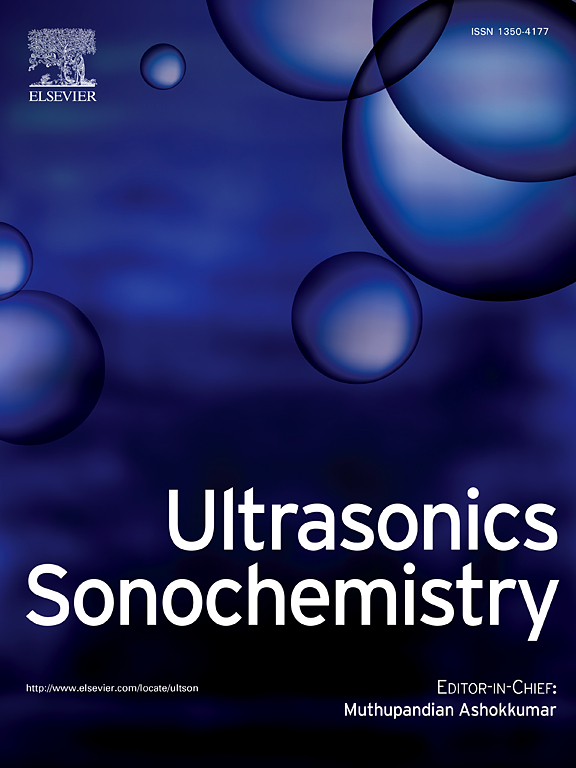Optimization of the effect of cold plasma treatment on UAE-NADES green extraction of chickpea roots (Cicer arietinum) bioactive compounds
IF 8.7
1区 化学
Q1 ACOUSTICS
引用次数: 0
Abstract
The chickpea (Cicer arietinum L.) root is an agricultural by-product with the potential for extracting valuable bioactive compounds that often remains underutilized. This study introduces an integrated extraction methodology to enhance the extraction of bioactives using atmospheric air low-pressure cold plasma (CP) treatment followed by ultrasound-assisted extraction (UAE) with natural deep eutectic solvents (NADES). Chickpea root powder was first subjected to CP treatment under optimized conditions (power, pressure, and time) identified via response surface methodology (RSM). Subsequently, UAE-NADES extraction was performed to maximize the results of antioxidant activity (DPPH) and total phenolic content (TPC). The integrated CP-UAE-NADES process enhanced TPC and DPPH compared to the untreated sample (non-CP). The optimum conditions were 11.5 min, 52 W, and 0.65 mbar. The predicted values of the Box-Behnken design for TPC and DPPH were compatible with the experimental Furthermore, microbial load reduction and color stability were analyzed to ensure chickpea root quality and functionality. The combined extraction methodology offers a sustainable and eco-friendly approach for the valorization of chickpea root as a source of bioactives, with potential applications in functional foods, nutraceuticals, and pharmaceuticals.
求助全文
约1分钟内获得全文
求助全文
来源期刊

Ultrasonics Sonochemistry
化学-化学综合
CiteScore
15.80
自引率
11.90%
发文量
361
审稿时长
59 days
期刊介绍:
Ultrasonics Sonochemistry stands as a premier international journal dedicated to the publication of high-quality research articles primarily focusing on chemical reactions and reactors induced by ultrasonic waves, known as sonochemistry. Beyond chemical reactions, the journal also welcomes contributions related to cavitation-induced events and processing, including sonoluminescence, and the transformation of materials on chemical, physical, and biological levels.
Since its inception in 1994, Ultrasonics Sonochemistry has consistently maintained a top ranking in the "Acoustics" category, reflecting its esteemed reputation in the field. The journal publishes exceptional papers covering various areas of ultrasonics and sonochemistry. Its contributions are highly regarded by both academia and industry stakeholders, demonstrating its relevance and impact in advancing research and innovation.
 求助内容:
求助内容: 应助结果提醒方式:
应助结果提醒方式:


